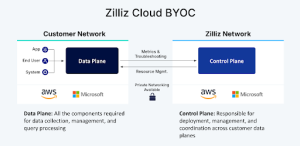Creating your first online course can be an exciting and rewarding endeavor. However, ensuring that it meets the needs of your students and stands out in a crowded marketplace requires careful planning and attention to detail. Here’s a guide to help you structure your course effectively, using the right tools, and making it an engaging experience for learners.
1. Course Outline and Structure
One of the first steps in designing an online course is creating a well-structured outline. Your outline should include the main topics or modules that will be covered, with clear objectives for each section. This will help keep learners focused and provide a roadmap of what to expect. Start by breaking down the subject matter into digestible chunks to avoid overwhelming beginners.
2. Compelling Course Content
To truly capture your audience, you need to offer valuable and comprehensive content. Depending on the subject matter, this might include:
- Videos: These are great for visual learners and can make complex ideas easier to understand. Well-edited, high-quality videos are a must.
- Text-based materials: Detailed notes, articles, or written explanations can complement video lessons.
- Interactive elements: Quizzes, worksheets, or assignments will help engage your audience and reinforce learning.
Make sure the content is beginner-friendly, especially if your students are new to the topic. Clarity is key, so avoid jargon unless it is explained clearly.
3. Visual and Interactive Design
An online course needs to be engaging, not just informative. Use a mix of media to enhance the learning experience, such as slides, infographics, and diagrams. An online course builder can be especially helpful here, as these platforms often offer templates that can streamline course design. Adding interactive elements, such as discussion forums or live Q&A sessions, can further improve the student experience by allowing them to engage with the content and each other.
4. Assessments and Feedback
Incorporating assessments, quizzes, or projects can help students test their knowledge. This not only helps learners feel more confident about what they’ve learned but also provides you with valuable feedback on which areas may need improvement. Include automated quizzes or written assignments that provide instant feedback to help students track their progress.
5. Course Accessibility
Make sure your course is accessible to all types of learners. This includes ensuring that videos are captioned and that content is available in different formats (audio, text, video). Offering downloadable materials, such as PDFs or transcripts, is also a good way to cater to various learning styles.
6. Tools and Platforms
Using an online course builder platform is crucial for simplifying the technical aspects of creating, hosting, and selling your course. These platforms often come with built-in tools for content delivery, payment processing, and student management. Look for features that align with your content needs—such as course hosting, multimedia support, and an easy-to-use interface.
Popular platforms like Thinkific, Teachable, and Kajabi allow you to create professional-grade courses without needing coding skills. They offer customizable course pages, integrated payment options, and even marketing tools to help promote your course.
7. Student Support and Engagement
To ensure that students have a positive learning experience, provide avenues for support. This could be through an FAQ section, dedicated support teams, or regular live Q&A sessions. Engaging with your students and responding to their inquiries helps build a strong learning community and fosters trust, which can translate into positive reviews and repeat business.
8. Marketing Your Course
Once your course is live, you’ll need to market it effectively. Create a landing page that highlights the key benefits of your course and how it can solve problems for your target audience. Use social media, email marketing, and guest blogging to spread the word. Additionally, consider offering a free preview or a sample lesson to entice potential students to enroll.
Final Thoughts
Building your first online course is an investment of time and energy, but with the right planning and tools, it can also be an immensely rewarding experience. By focusing on high-quality content, interactive features, and the right course platform, such as an online course builder, you can create a learning environment that’s both educational and engaging. Remember to listen to student feedback and continuously improve your course for future iterations.





